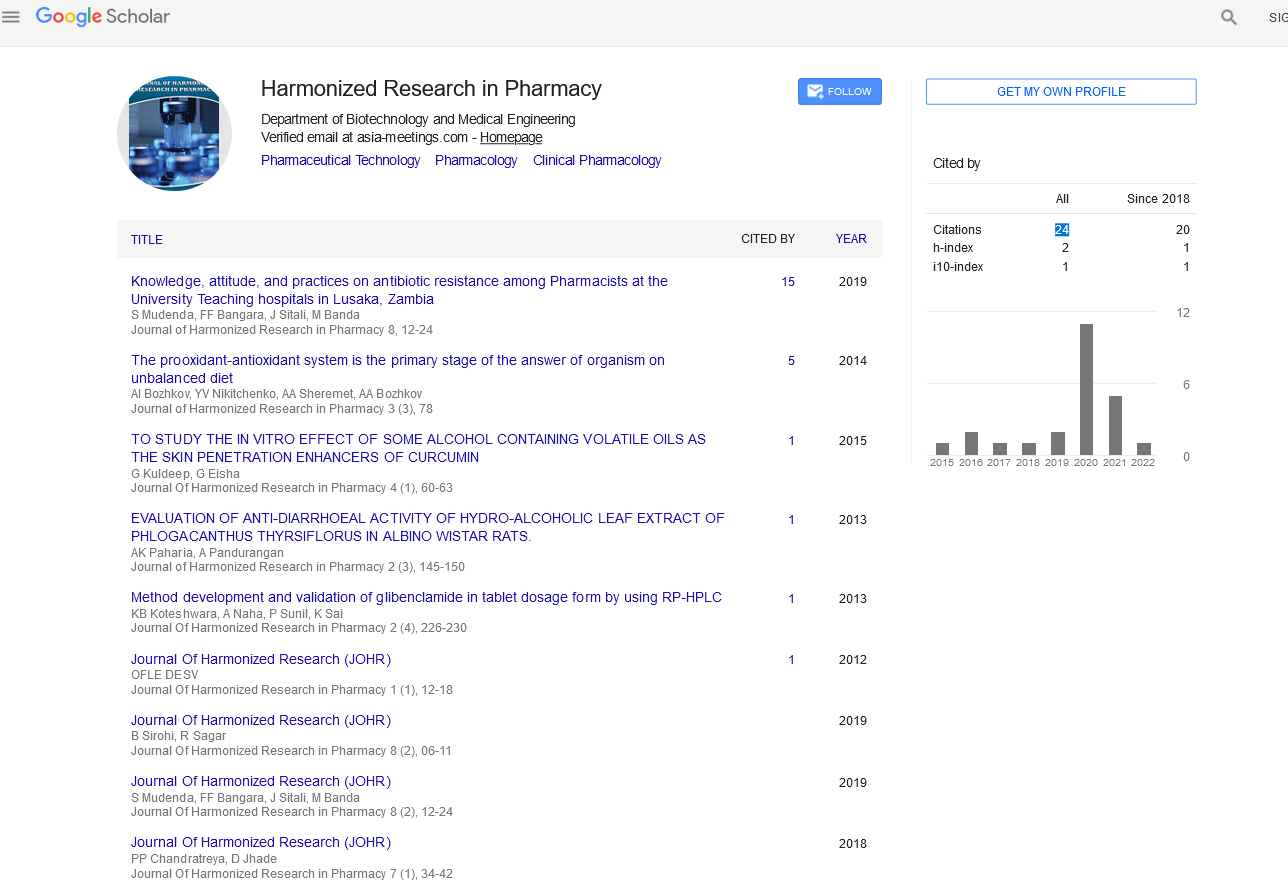Commentary - (2022) Volume 11, Issue 4
NEW APPROACHES IN NOVEL DRUG DELIVERY SYSTEM
Yang Mai*Received: Nov 28, 2022, Manuscript No. JHRP-22-84138; Editor assigned: Dec 02, 2022, Pre QC No. JHRP-22-84138 (R); Reviewed: Dec 16, 2022, QC No. JHRP-22-84138; Revised: Dec 23, 2022, Manuscript No. JHRP-22-84138 (R); Published: Dec 30, 2022, DOI: 10.30876/2321-0958.22.11.192
Description
Growth hormone pharmacological and formulation studies utilizing powerful pharmaceuticals is one of the many technological advancements that is essential to a healthy living. Despite its safety and pharmacological efficacy, the idea of a dosage form in which a medicine is incorporated is effectively evolving. Drug delivery systems have been designed using a variety of scientific technologies. Due to its superior accessibility, pleasant dosage administration, and patient compliance for non-invasive medication delivery, oral drug administration is significant and frequently employed. Oral dosing forms have some drawbacks, including uneven medication absorption, brief stomach residence duration, and partial drug release. To get over these restrictions, a lot of focus is now being placed on adapting oral dose forms to survive in diverse GIT environments.
Although the relationship between medication administration and its pharmacological effect is a complex parameter, choosing and formulating the optimum dosage form is an essential step in the drug development process. Drug response is affected by both intrinsic and extrinsic factors, including product bioavailability (drug absorption rate), pharmacokinetics, and the specific concentration-effect connection.
Novel Drug Delivery System
It is evident that the efficacy with which a drug ingredient is delivered at the site of action influences its effect in addition to its pharmacological effect. In order to increase the performance of drugs for maximum activity, several unique drug delivery methods have been developed thanks to the latter’s interest. When taken as prescribed, conventional instant release dosage forms keep medication concentrations within a therapeutic range. The medication concentration in plasma does, however, vary significantly. There have been numerous attempts to enhance the current therapy. Innovative medication delivery systems can boost a medicine’s bioavailability.
Sustained release drug delivery system
Due to its extended effects, reduced side effects, and reduced frequency of administration, sustained release dosage forms are safer and more effective than conventional dosage forms. Reduced fluctuations in plasma drug concentration and less frequent delivery of medication are major benefits of sustained release dosage forms. This keeps the patient compliant and prevents frequent chemical imbalances in the blood caused by foreign objects. Variations in the gastric emptying process may cause some bioavailability issues, which could lead to changes in in-vivo performance.
Oral controlled release drug delivery system
The desired medicine’s bioavailability is influenced by a number of variables, including how quickly the drug reaches its effective plasma level, how long it stays there, and how it is not overtaken by pharmaceuticals that can be quickly absorbed. Drug concentration at the site of action, which is associated with plasma drug concentration, affects the pharmacological effect’s intensity. When the therapeutics index is reached, that is, the drug concentration is kept between the lowest effective and maximum safe level, the condition is optimal. Conventional dose forms consistently fall short in keeping the therapeutics index at its highest level.
Repeated medication administration at set intervals is desirable to maintain the therapeutic index for a longer period of time, however this poses issues such patient noncompliance and significant peaks and troughs in the drug concentration time curve. Using either spatial placement or temporal delivery, Controlled Release Drug Delivery Systems (CRDDS) release the medication in a planned, predictable, sustained manner and keep drug concentration at an effective level. Therefore, CRDDS has a number of benefits, including better patient compliance, minimal plasma level volatility, lower total medication consumption, less drug accumulation, and a reduction in both local and systemic side effects.
Objective and advantages of CRDDS
• To maintain a steady therapeutic medication level while reducing the frequency of dosage
• To keep drug response consistent
• Lower the overall drug consumption
• Decreasing nighttime doses to improve patient compliance
• Reducing adverse local and systemic consequences
• Reduce drug buildup and plasma drug concentration variability
Disadvantages of controlled release drug delivery
• The potential for dosage dumping
• Reduced possibility of precise dose control and decreased systemic availability
• Increase the metabolism’s first pass
• It can be challenging to terminate pharmaceutical action immediately in cases of severe poisoning or intolerance
• Depending on the duration of the dosage form’s stay in the GIT

Google Scholar citation report
Citations : 147
Journal of Harmonized Research in Pharmacy received 147 citations as per google scholar report









